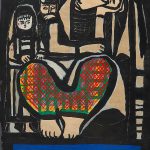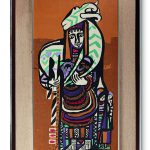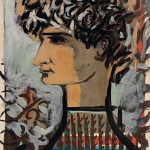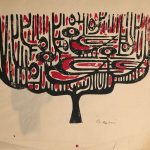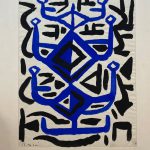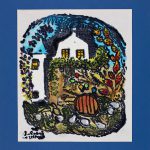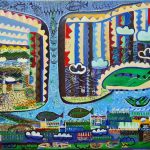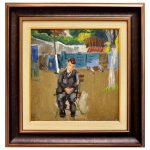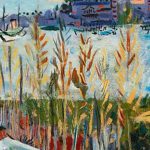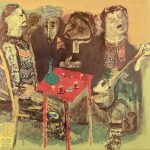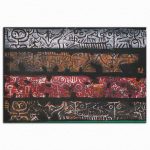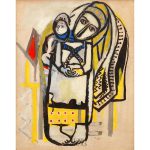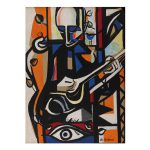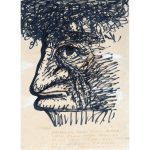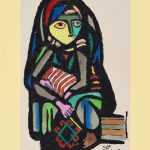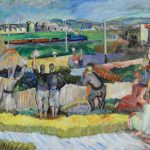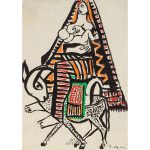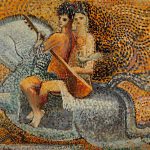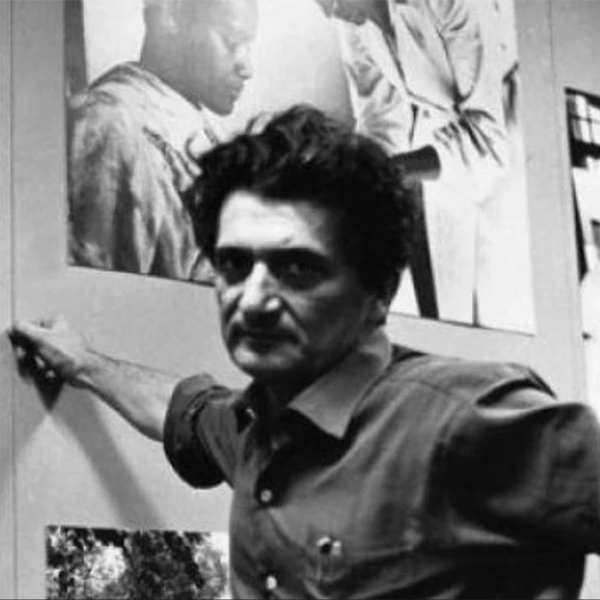
Who is Bedri Rahmi Eyüboğlu? (1911-1975)
Who is Bedri Rahmi Eyüboğlu, who moved away from the traditional oil painting technique and added different materials such as plastic glue and paints, sand, sawdust and crumpled Japanese paper to the painting? The life story of Bedri Rahmi Eyüboğlu, who painted many murals, is a source of inspiration for those who love the art of painting.
Bedri Rahmi Eyüboğlu, who started painting with his teacher Zeki Kocamemi (Ali Bedrettin) while studying at Trabzon High School, increased his interest and knowledge in painting with the painting books his older brother Sabahattin Eyüboğlu sent from Paris. He entered the State Academy of Fine Arts in 1929 and became a student of Nazmi Ziya Güran and İbrahim Çallı. Before finishing school in 1931, he went to Paris to join his older brother to improve his French. He was interested in art history and was influenced by the artist Cézanne, who made copies of the Romantics and post-impressionist artists.
He attended the André Lhote Workshop for about a month in 1932, and met Eren Eyüboğlu (Ernestine Letoni), with whom he would later share his life. He went to London in 1933 and returned to Turkey at the end of the year. In 1934, he started working as a painter in Yeni Adam magazine. He joined Group d in the same year. He opened his first personal exhibition in Bucharest in 1935. He worked as a translator for a while, and his articles began to be published in newspapers. He married Eren Eyüboğlu in 1936, and a year later he started working at the Academy of Fine Arts as an assistant to Leopold Levy. Fauvist made many paintings that emphasize effective color and stain. He participated in the State Painting and Sculpture Exhibitions and received awards. In 1947, he supported his students to establish the Group of 10. In 1950, he opened a retrospective at Ankara Faculty of Languages, History and Geography and a personal exhibition at Maya Gallery.
Bedri Rahmi and his wife go to the USA for two years with the Rockefeller Scholarship he received in 1961. During this period, he turns to abstract forms with rich colors. He states that the American Period added another dimension to his art. He was a visiting professor at the University of California, Berkeley for two years. In August 1961, the motif of an Anatolian Peasant Woman Carrying Her Children on a Donkey was printed as a postcard in America for the benefit of UNICEF.
Eyüboğlu, who was also a poet, published his poems, paintings, drawings and essays in Yeditepe, Ses, Güney, İnsan, İnkılapçı Gençlik and Varlık magazines starting from 1933. He wrote many poetry books, essays and art books. The artist, who was influenced by folk literature, carried these influences into his paintings. He produced works in many techniques and forms such as writing, engraving, ceramics, sculpture, stained glass, mosaic, calligraphy, serigraphy and lithography. He combined traditional ornamentation and folk crafts with the Western education he received and adhered to the understanding of East-West synthesis of the period.
Headscarves, rugs and scarves were among the pictorial motifs he used, and he made prints on which he printed his own patterns. He moved away from the traditional oil painting technique and incorporated different materials into the painting, such as plastic glue and paints, sand, sawdust and crumpled Japanese paper. Starting from the mid-1940s, he gave importance to architecture-artist collaboration, started to carry out wall painting applications, and his biggest assistant was his wife. He painted many murals in many cities such as Ankara, Istanbul, Paris and Brussels.
Starting from the 1940s, Bedri Rahmi cared about the Anatolian folk culture, where different civilizations came and went, and the multi-identity historical city identity of Istanbul, and produced works based on Cevat Şakir Kabaağaçlı's unity of Anatolian cultures and Azra Erhat's Blue Anatolia and Blue Voyage dream. The understanding of humanism and interpretation of cultural history on the axis of the Blue Anatolia journeys, which a group of people including the artist, Azra Erhat and Sebahattin Eyüboğlu started in 1945 in order to get to know Anatolia and its culture more closely, constitute the main idea of his works. The artist, who created works based on synthesis culture by being influenced by data such as Anatolian rugs, Islamic calligraphy, and Byzantine mosaics, also produced works in line with the non-figurative/abstract understanding of the period in the 1950s.


